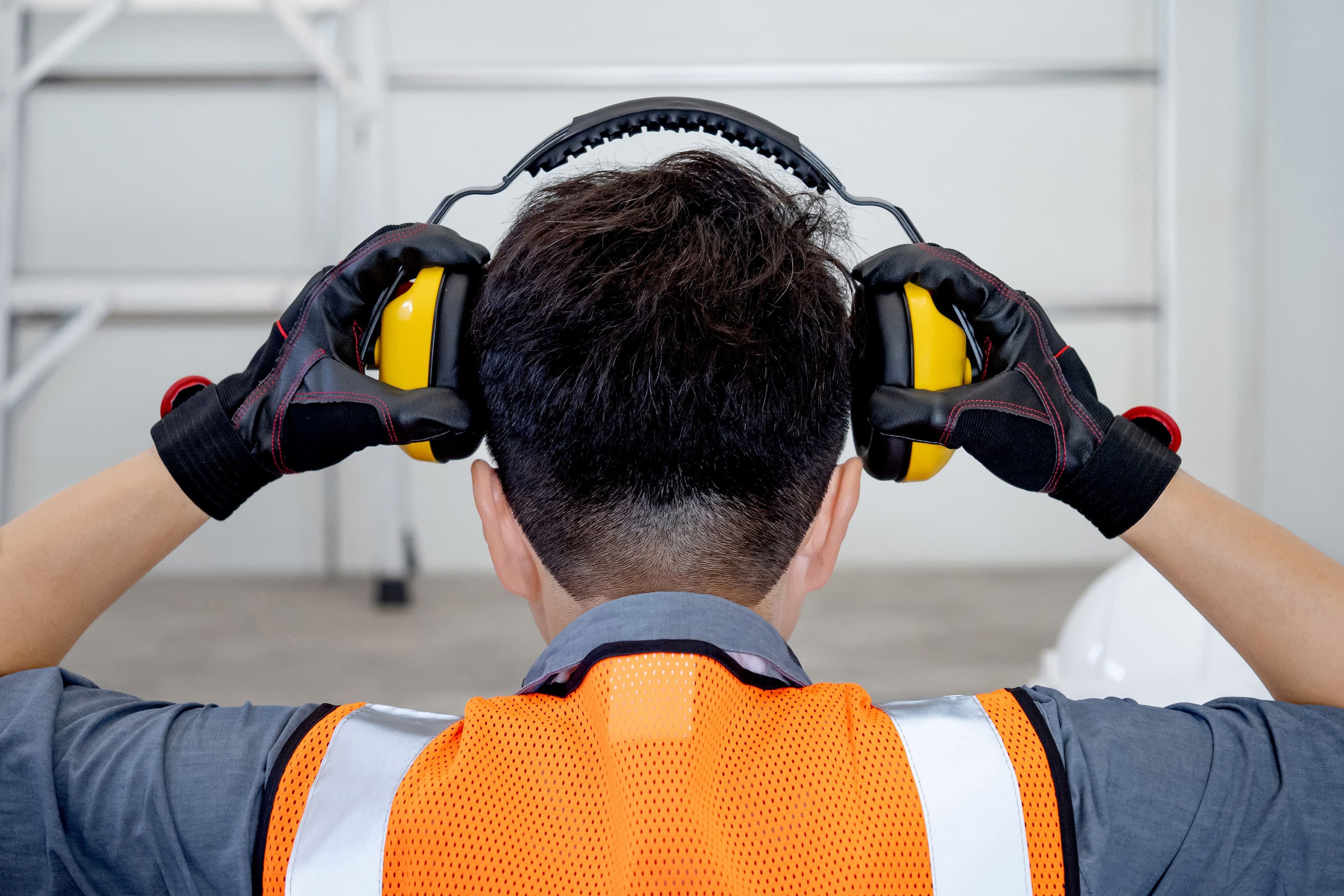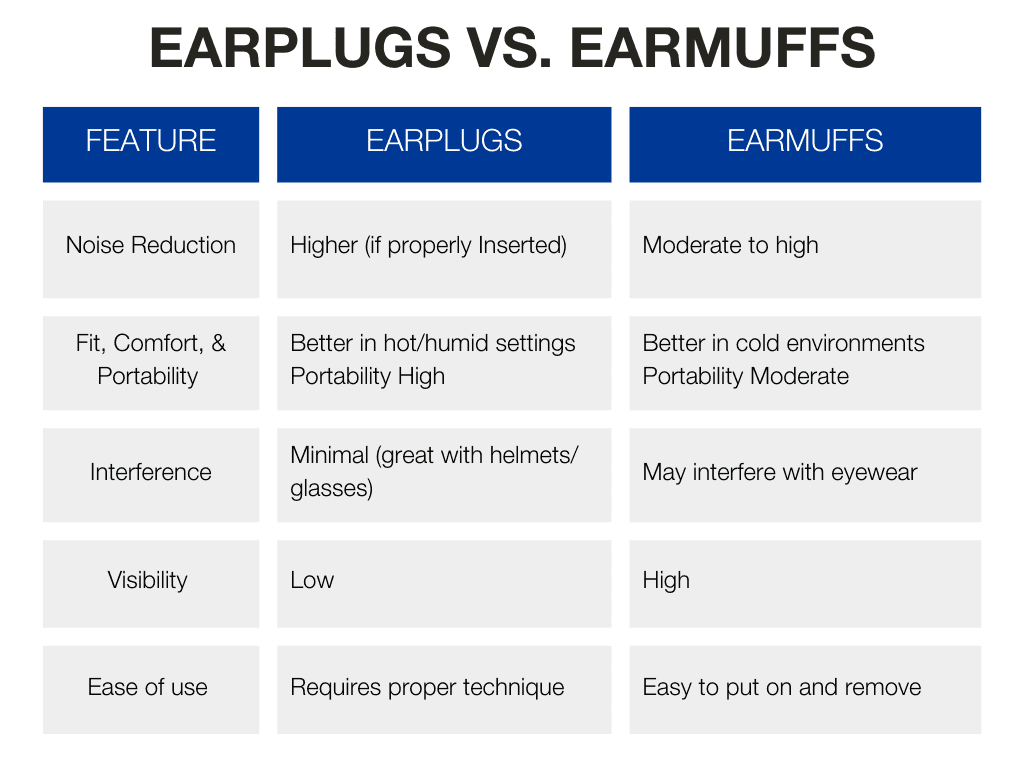Ear Plugs vs. Ear Muffs: What Works Best?

Occupational noise exposure can cause permanent hearing loss if workers aren’t adequately protected. That’s why the Occupational Safety and Health Administration (OSHA) has established clear limits on workplace noise levels.
According to OSHA, the permissible exposure limit (PEL) is 90 A-weighted decibels (dBA) over an 8-hour work shift. For every five dBA increase above that, the safe exposure time is cut in half.
Earplugs and earmuffs are two common options for protecting against harmful noise. Understanding the difference between earplugs and earmuffs is key to choosing the best option for your team.
OSHA Noise Exposure Limits and the Importance of Protection
Prolonged exposure to loud noise can lead to noise-induced hearing loss (NIHL)—a permanent condition that often develops gradually, making it hard to detect until significant damage is done.
Both earplugs and earmuffs have a decibel (dB) rating that indicates the noise reduction rating (NRR). For example, if an earmuff is rated at 30 dB and the work environment is 120 dB (e.g., operating a jackhammer), the actual exposure would be reduced to 90 dB, helping the worker stay within OSHA’s limits.







